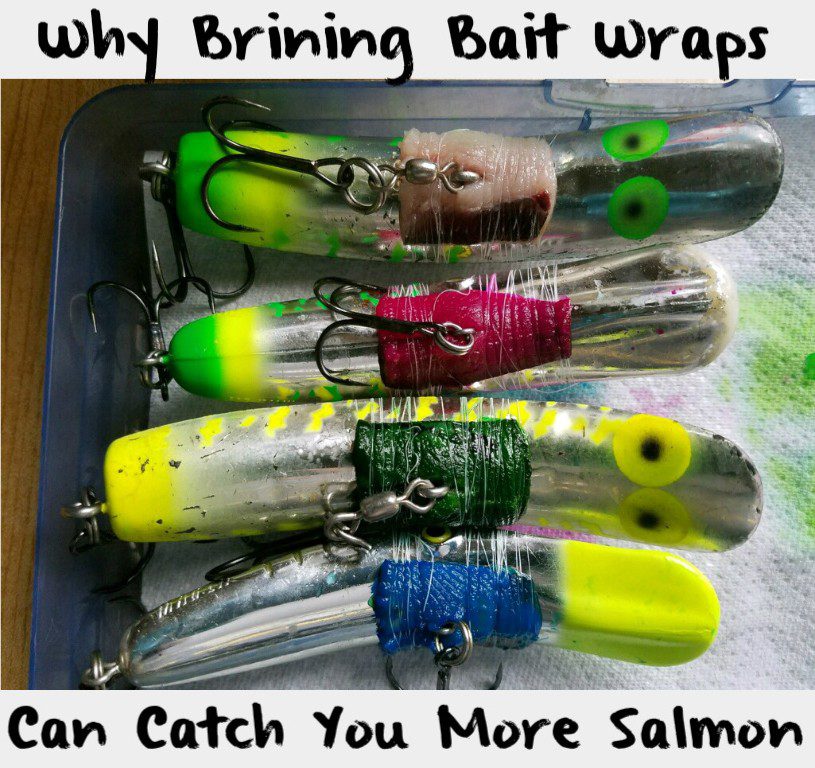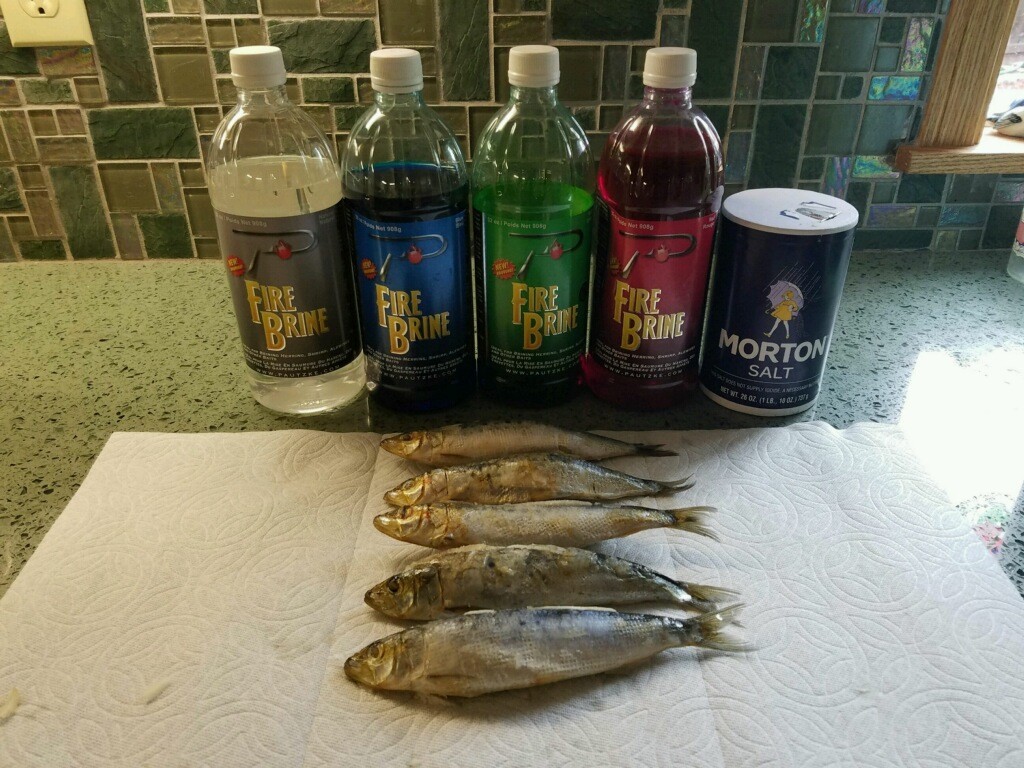Salmon
Why Brining Bait Wraps Can Catch You More Salmon
By: Alan Borges
We’ve had a lot of rain the last few weeks along the coast in the Pacific Northwest. When coastal rivers are dropping back in shape like they are doing now is when we use plugs the most. When using plugs wrapping them with sardines, tuna and other baits are imperative. The bait scent triggers a reactionary bite. Nine times out of 10 the chances of you getting bit without a wrap is slim.
Over the last few years coloring your wrap has become more popular. It’s no different than ocean trollers brining their anchovies and sardines. Just like the ocean guys I use Fire Brine. River anglers are doing the same thing. Meanwhile, watercolor dictates the color wrap we use. Another factor stems from pressure. Oftentimes having a different color wrap can instigate a strike.

I’ve found as the clarity of the water changes the salmon tend to bite the different colors accordingly. The most popular color brine for all water conditions has Green Fire Brine. In all honesty I can get salmon to hit that anytime. On the other hand, even when the river has a lot of color I still like Green Fire Brine, but red and chartreuse works well, too. I’ll use Blue and Natural Fire Brine when the water is clear.
Brining your baits does several things things. In addition to adding color and making it more durable it toughens it up and allows you to keep it on the lure longer because it’s been brined. If you don’t brine the bait you’ll see it shred apart in the current. I’ve caught two or three fish on one wrap that wasn’t even torn apart. Several years ago before I started brining the wraps I’d catch one fish and have to change it out.

The Ever So Easy Process
Step 1: Choose Your Wrap
Herring/sardines are the most popular, but some guys use anchovies and tuna, too. With tuna, it’s filleted tuna, rather than the stuff out of the can.
Step 2: Fillet Bait
Filleting bait is an art. It needs to be done properly in order for the lure to continue to swim correctly. With larger sardines (and other baits) use caution not to make them too thick. You want a thin fillet so it doesn’t obscure the lure action. I’d aim for the 1/8 of an inch range. A quarter-inch is too thick.

Another thing to consider is the length. For example, on a K-16 Kwikfish I want my wrap to be two to 2.5 inches long. With a K-14 or K-15 I would go from 1 ¾ to 2 inches. With a K-12 you don’t want to go longer than an inch. Following these parameters will maintain balance in the lure’s action, while also emitting a strong scent tail. The key to this is making sure the lure runs correctly or you aren’t going to get bit. This means you want the lure to dive straight down without it darting at all to one side or another.
Step 3: Brine Them
Place well-trimmed and symmetrical fillets into brine. I use four main colors: natural, blue, green and red. Once placing the fillets into the solution let them sit 24 hours. During the process some choose to add salt. This depends on how tough you want your bait to be. The more salt you add the tougher the bait will get.


Step: 4: Use or Store
At this point your fillets are ready for the lure. However, if you aren’t going to use all the fillets make sure to prepare them to be stored at this point. I roll them up in cellophane and then roll them in paper towels and freeze them. Make sure you mark them so you know what colors are what. After frozen I vacuum seal them because if you do so prior it will squeeze the juices right out of it.

Editor’s Note: Veteran guide Alan Borges operates Alan’s Guide Service. For more information on his guided salmon trips please visit https://www.facebook.com/Alans-Guide-Service or http://alansguideservice.com.








